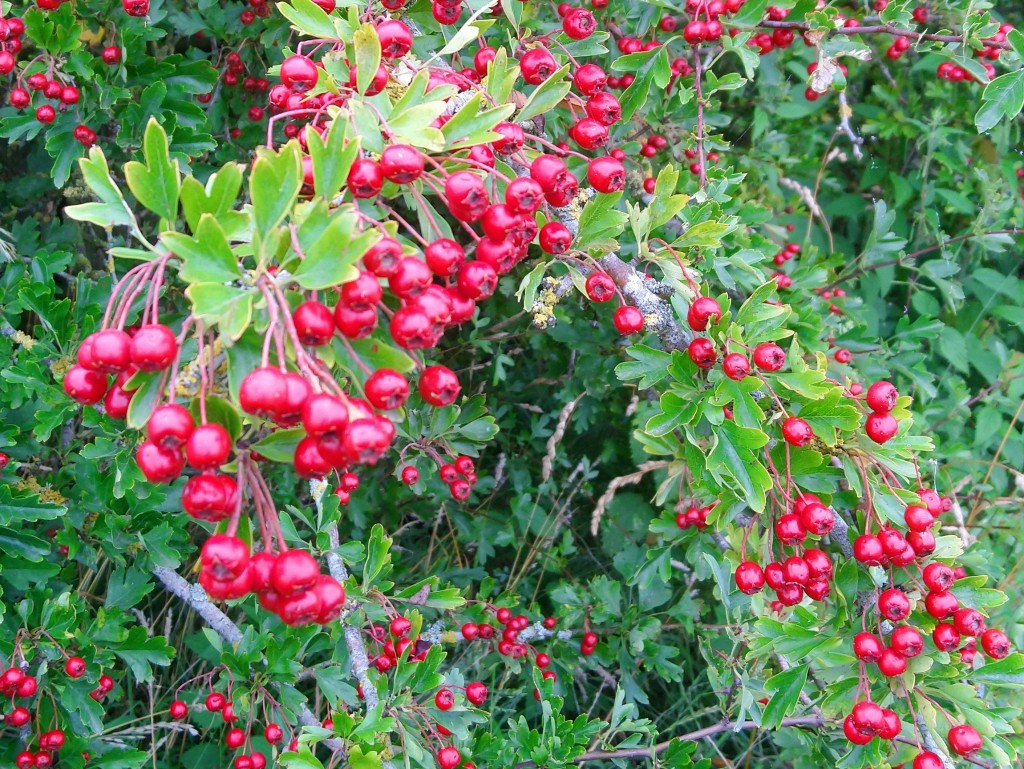
[103] Crataegus monogyna, Hawthorn
Introduction
Crataegus monogyna, the Hawthorn, is a common and widespread tree that often appears in environments where it grows as a large shrub.
There are about two hundred species of Crataegus, all of which are called Hawthorns of some type. Crataegus monogyna is known as the Common Hawthorn, Oneseed Hawthorn or Single-seeded Hawthorn, but in Britain we just call it a Hawthorn. It has also been called Mayblossom, Maythorn, Quickthorn or Whitehorn.
They should not be confused with the related genus Rhaphiolepsis found in East Asia, also called Hawthorns or the Hawthorn-leaf Maple, which is a type of [003] Maple.
Taxonomy
Kingdom – Plants
Division – Vascular Plants
Class – Angiosperms (Flowering Plants)
Order – Rosales
Family – Rosaceae
Genus – Crataegus
Section – Crataegus
Series – Crataegus
Scientific Name – Crataegus monogyna
Many species of Crataegus are cultivated and there are many hybrids and cultivars.
Name
Haw is an Old English term for a hedge and the fruit of the Hawthorn is still called a haw. The term hawthorn was first used for the species Crataegus monogyna.
Crataegus comes from Ancient Greek ‘kratos’ strong, and ‘akis’ sharp, as the wood is very strong and the trees are thorny.
Monogyna means one-seed.
Description
There are about 200 species of Crataegus divided in to eight sections, which are further divided into series.
Crataegus monogyna is a dense and thorny shrub or tree with a cracked bark that can give the appearance of a gnarled, old tree. the leaves are deeply lobed.
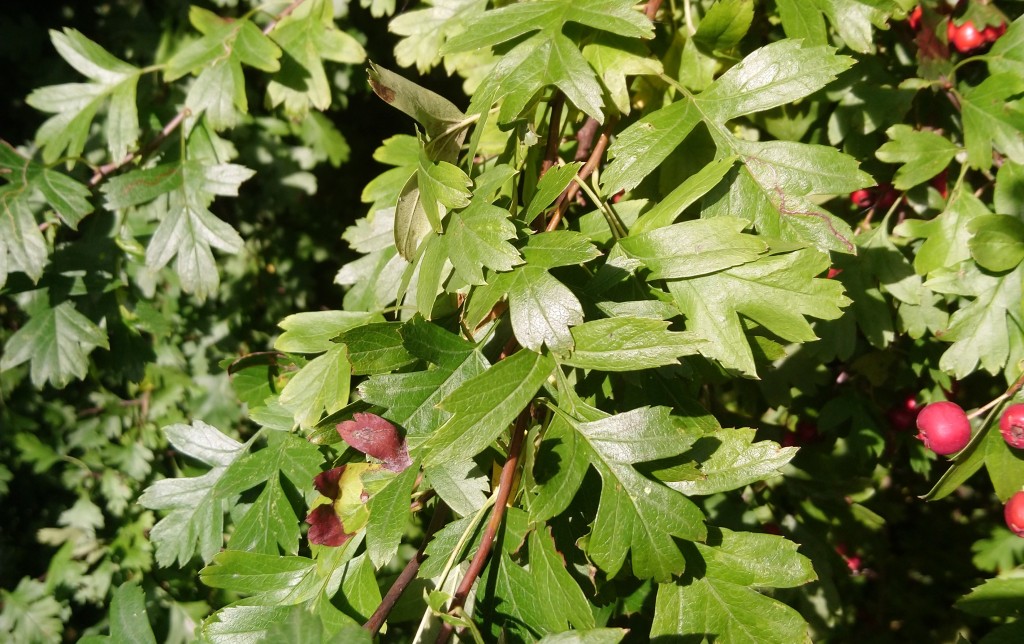

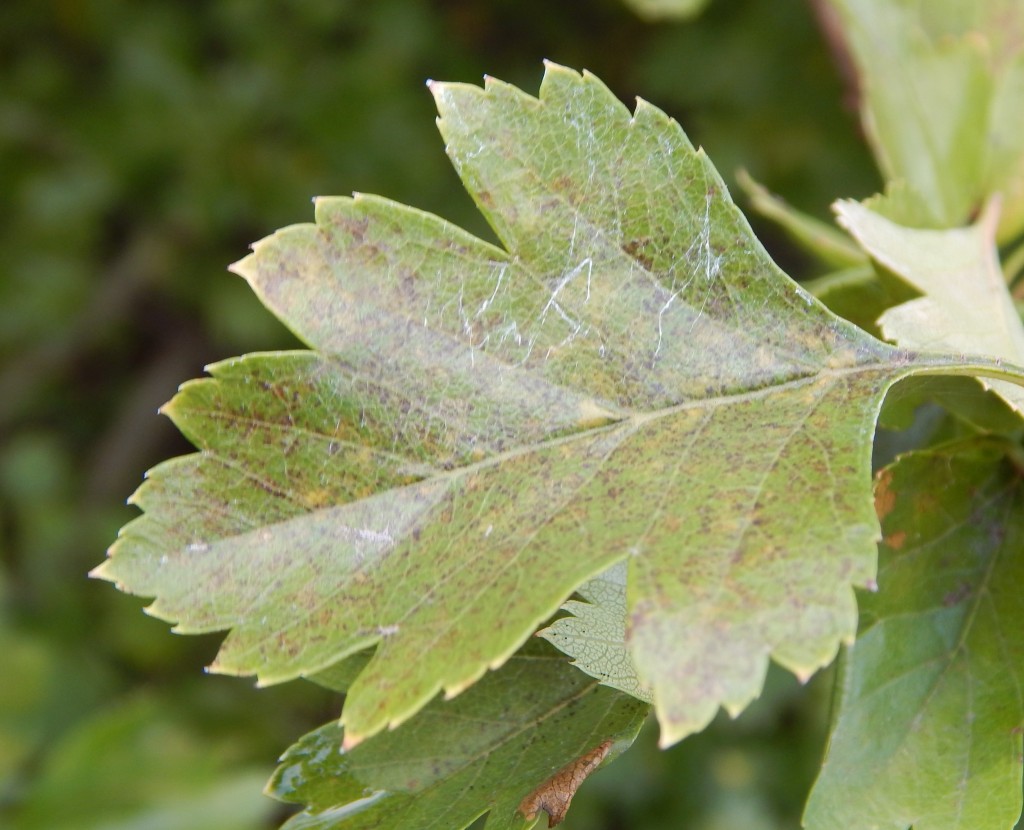
In late Spring it is covered with small white flowers and these turn into small red berry-like fruits that can persist all winter. They are important food sources for overwintering birds such as [347-8] Thrushes and Waxwings.
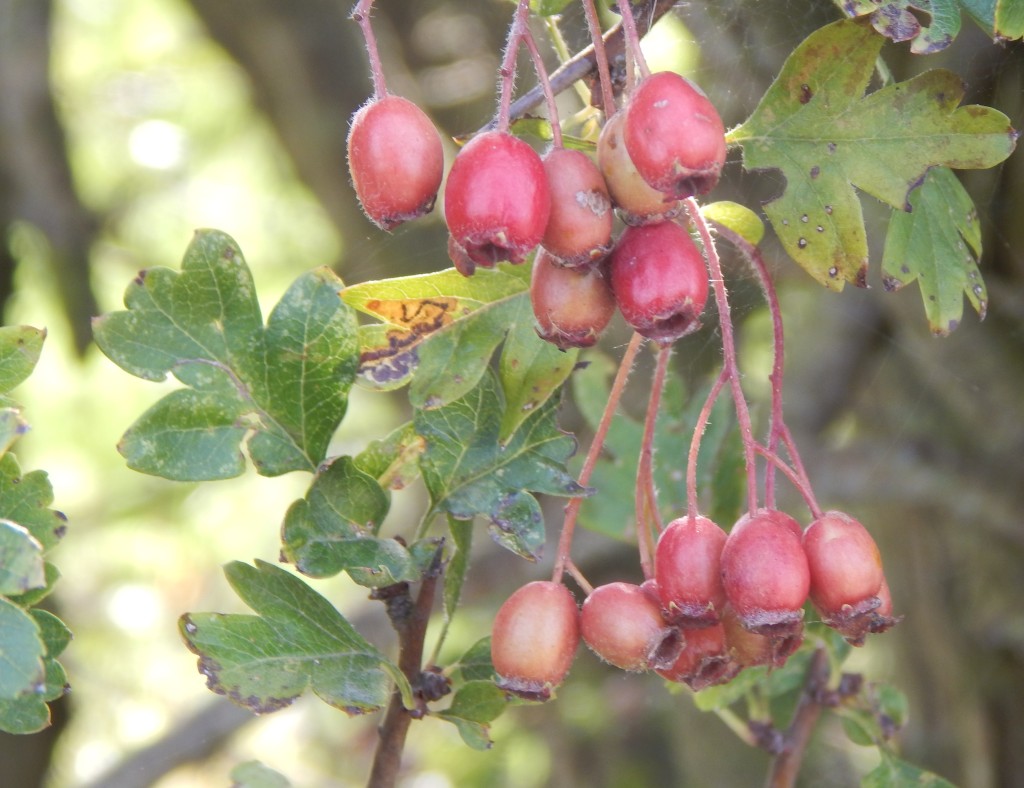
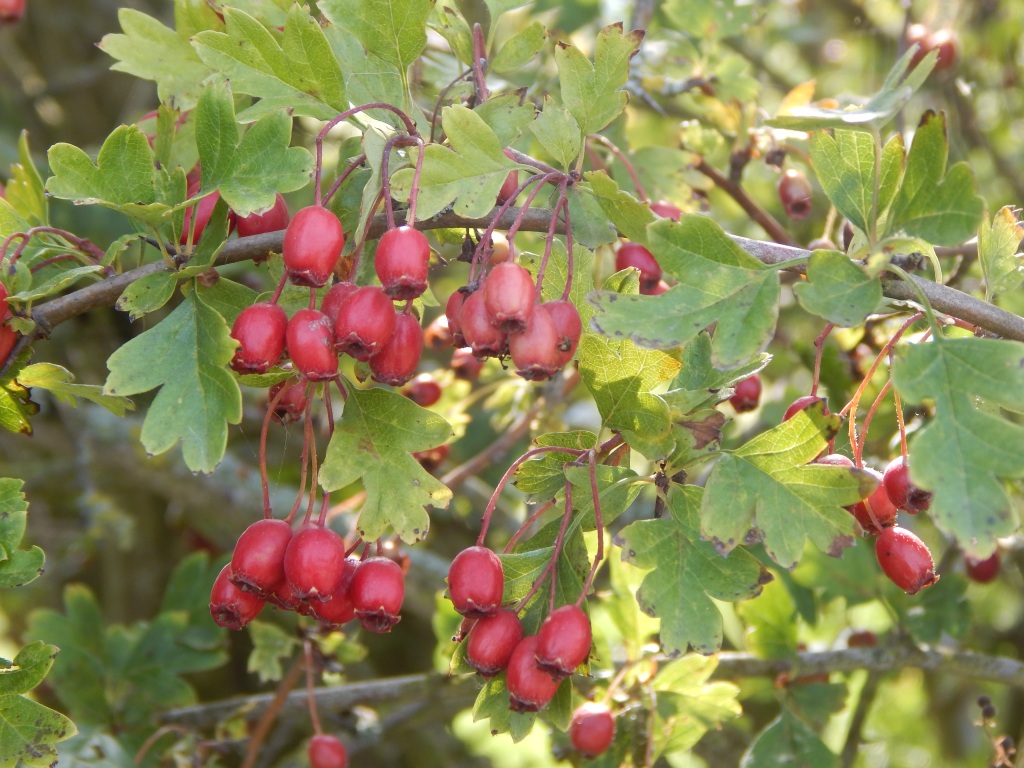

Habitat and use
The Hawthorn is native to Europe and adjacent parts of Africa and Asia. It has been widely introduced in other countries.
It has traditionally been used as a countryside hedge plant as its dense, thorny nature makes it a good barrier for cattle or people. It is not often used as a garden hedge.
Several hybrids with other Crataegus species are cultivated as garden shrubs.
Leaves, petals and fruit have all been eaten in the past. The fruits can be used for jams, jellies and alcoholic drinks.
Other Notes
I used to think of the Hawthorn as a tree. Most of the trees I see on Cleeve Common are Hawthorn but in this relatively harsh open hillside environment, they are often no larger than shrubs.
See also
The Midland Hawthorn, Crataegus laevigata (or lævigata or levigata,) also called the English Hawthorn or Woodland Hawthorn, may be found locally in lowland ancient woodlands. Its leaves are slightly different in shape and the fruits have two or more seeds. The Common Hawthorn is, of course, single seeded.

Pingback: [260] Photinia x fraseri, Red-tip Photinia | The Species of Britain
Pingback: [262] Phyllopertha horticola, Garden Chafer | The Species of Britain
Pingback: [320] Sorbus aria, Whitebeam | The Species of Britain
Pingback: [351] Ulex europaeus, Gorse | The Species of Britain